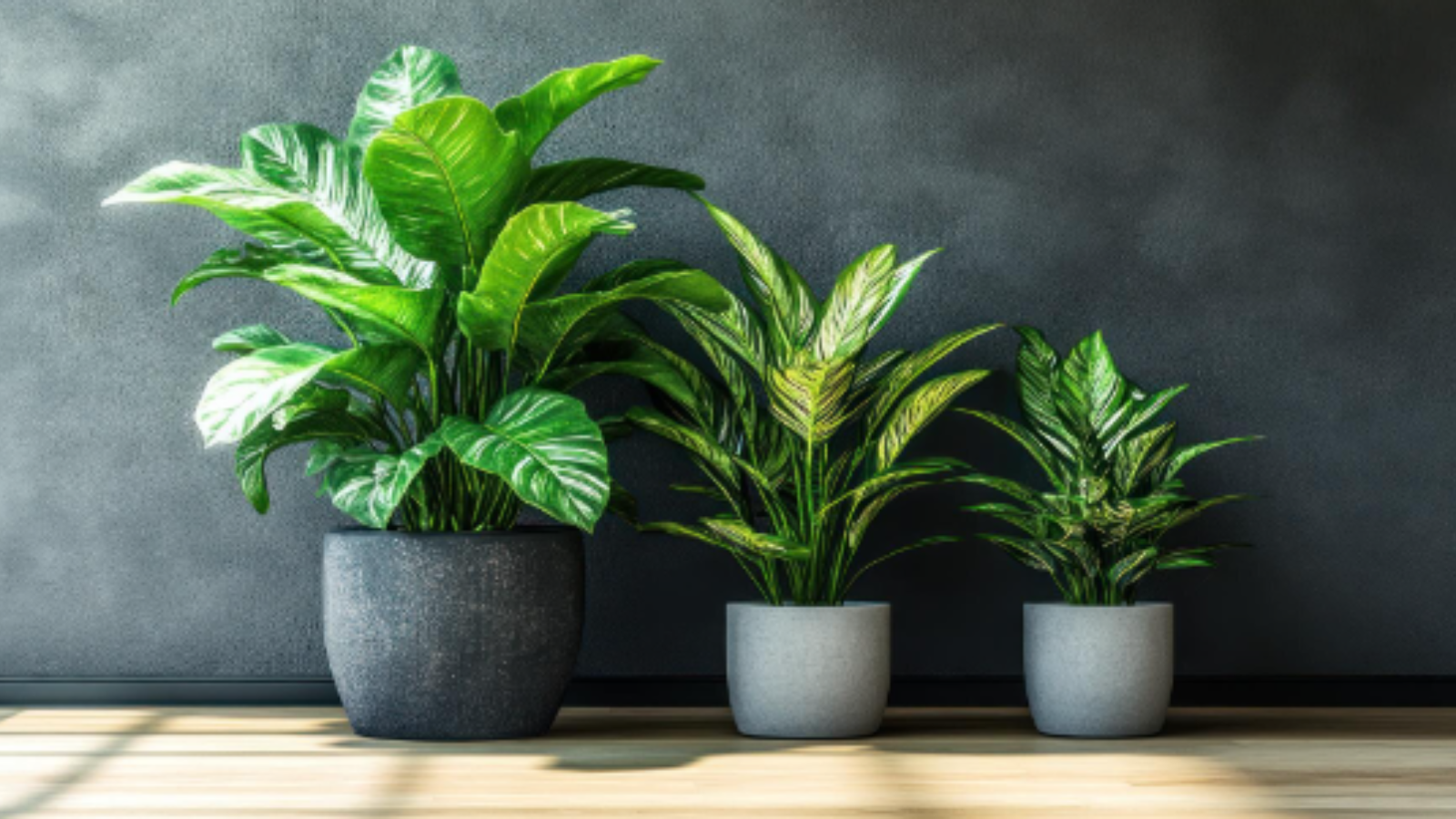5 Indoor Plants That Cleanse Your Home Air After Diwali Firecrackers
Diwali, the festival of lights, brings joy, celebrations, and vibrant energy to homes across India. But along with the festivities, it also brings a spike in air pollution. Firecrackers, vehicle emissions, and dust increase indoor and outdoor pollution, affecting respiratory health and overall well-being. A simple, natural solution is to bring air-purifying indoor plants into your home or office. These plants help detoxify the air, increase oxygen levels, and restore freshness after Diwali pollution.
Why Indoor Plants Are Essential After Diwali
Post-Diwali, indoor air is often filled with particulate matter, smoke, and toxic chemicals like benzene, carbon monoxide, and formaldehyde. Air-purifying plants act as natural detoxifiers by absorbing these pollutants. They not only improve air quality but also add greenery and calmness to your surroundings. Choosing the right indoor plants can create a cleaner, healthier, and more oxygen-rich environment.
5 Indoor Plants That Combat Diwali Pollution
1. Money Plant
The money plant is more than a symbol of prosperity; it’s a natural air purifier. It removes harmful gases such as carbon monoxide and helps maintain indoor oxygen levels. Easy to grow in pots or bottles, it’s perfect for homes and offices.
Primary benefit: Filters carbon monoxide
Maintenance: Low
2. Snake Plant (Mother-in-Law’s Tongue)
The snake plant is a hardy indoor plant that releases oxygen day and night. It efficiently absorbs toxic substances like formaldehyde and benzene, making it an ideal choice for reducing indoor pollution.
Primary benefit: Absorbs formaldehyde and benzene
Maintenance: Minimal care required
3. Peace Lily
The peace lily is admired for its elegant white blooms and graceful appearance. Beyond aesthetics, it purifies the air by removing pollutants such as ammonia, benzene, and trichloroethylene. Thriving in low light, it’s perfect for indoor corners and office desks.
Primary benefit: Removes ammonia and benzene
Maintenance: Low-light tolerant
4. Tulsi (Holy Basil)
Tulsi, revered in Indian households, is both medicinal and air-purifying. It reduces carbon dioxide and other airborne toxins while releasing fresh oxygen. The plant’s natural aroma also helps alleviate the effects of indoor pollution.
Primary benefit: Reduces carbon dioxide and toxins
Maintenance: Easy and aromatic
5. Aloe Vera
Famous for its healing properties, Aloe vera doubles as an effective air purifier. It absorbs harmful chemicals like benzene and formaldehyde, improving indoor air quality. Its gel-filled leaves can also be used for minor burns and skin care, making it a multifunctional plant.
Primary benefit: Absorbs toxic substances
Maintenance: Minimal care
Air pollution during and after Diwali is a growing concern, but incorporating air-purifying indoor plants offers a natural and eco-friendly solution. Plants like Money Plant, Snake Plant, Peace Lily, Tulsi, and Aloe Vera not only clean the air but also enhance the beauty and freshness of your living spaces. By adding these green companions, you can breathe easier and enjoy a healthier home after the Diwali celebrations.

Why Indoor Plants Are Essential After Diwali
Post-Diwali, indoor air is often filled with particulate matter, smoke, and toxic chemicals like benzene, carbon monoxide, and formaldehyde. Air-purifying plants act as natural detoxifiers by absorbing these pollutants. They not only improve air quality but also add greenery and calmness to your surroundings. Choosing the right indoor plants can create a cleaner, healthier, and more oxygen-rich environment.
5 Indoor Plants That Combat Diwali Pollution
1. Money Plant
The money plant is more than a symbol of prosperity; it’s a natural air purifier. It removes harmful gases such as carbon monoxide and helps maintain indoor oxygen levels. Easy to grow in pots or bottles, it’s perfect for homes and offices.
Primary benefit: Filters carbon monoxide
Maintenance: Low
2. Snake Plant (Mother-in-Law’s Tongue)
The snake plant is a hardy indoor plant that releases oxygen day and night. It efficiently absorbs toxic substances like formaldehyde and benzene, making it an ideal choice for reducing indoor pollution.
Primary benefit: Absorbs formaldehyde and benzene
Maintenance: Minimal care required
3. Peace Lily
The peace lily is admired for its elegant white blooms and graceful appearance. Beyond aesthetics, it purifies the air by removing pollutants such as ammonia, benzene, and trichloroethylene. Thriving in low light, it’s perfect for indoor corners and office desks.
Primary benefit: Removes ammonia and benzene
Maintenance: Low-light tolerant
4. Tulsi (Holy Basil)
Tulsi, revered in Indian households, is both medicinal and air-purifying. It reduces carbon dioxide and other airborne toxins while releasing fresh oxygen. The plant’s natural aroma also helps alleviate the effects of indoor pollution.
Primary benefit: Reduces carbon dioxide and toxins
Maintenance: Easy and aromatic
5. Aloe Vera
Famous for its healing properties, Aloe vera doubles as an effective air purifier. It absorbs harmful chemicals like benzene and formaldehyde, improving indoor air quality. Its gel-filled leaves can also be used for minor burns and skin care, making it a multifunctional plant.
Primary benefit: Absorbs toxic substances
Maintenance: Minimal care
Air pollution during and after Diwali is a growing concern, but incorporating air-purifying indoor plants offers a natural and eco-friendly solution. Plants like Money Plant, Snake Plant, Peace Lily, Tulsi, and Aloe Vera not only clean the air but also enhance the beauty and freshness of your living spaces. By adding these green companions, you can breathe easier and enjoy a healthier home after the Diwali celebrations.
Next Story